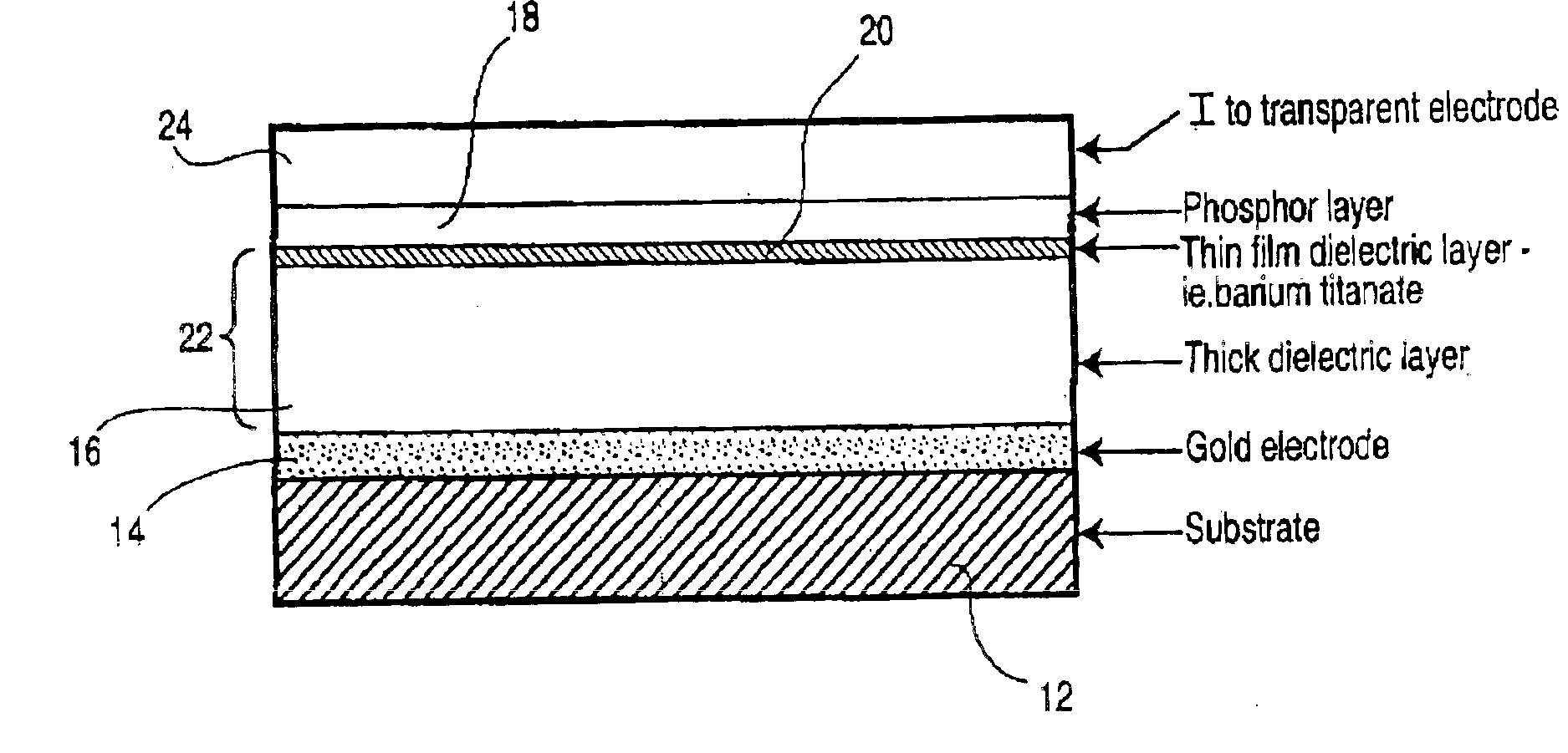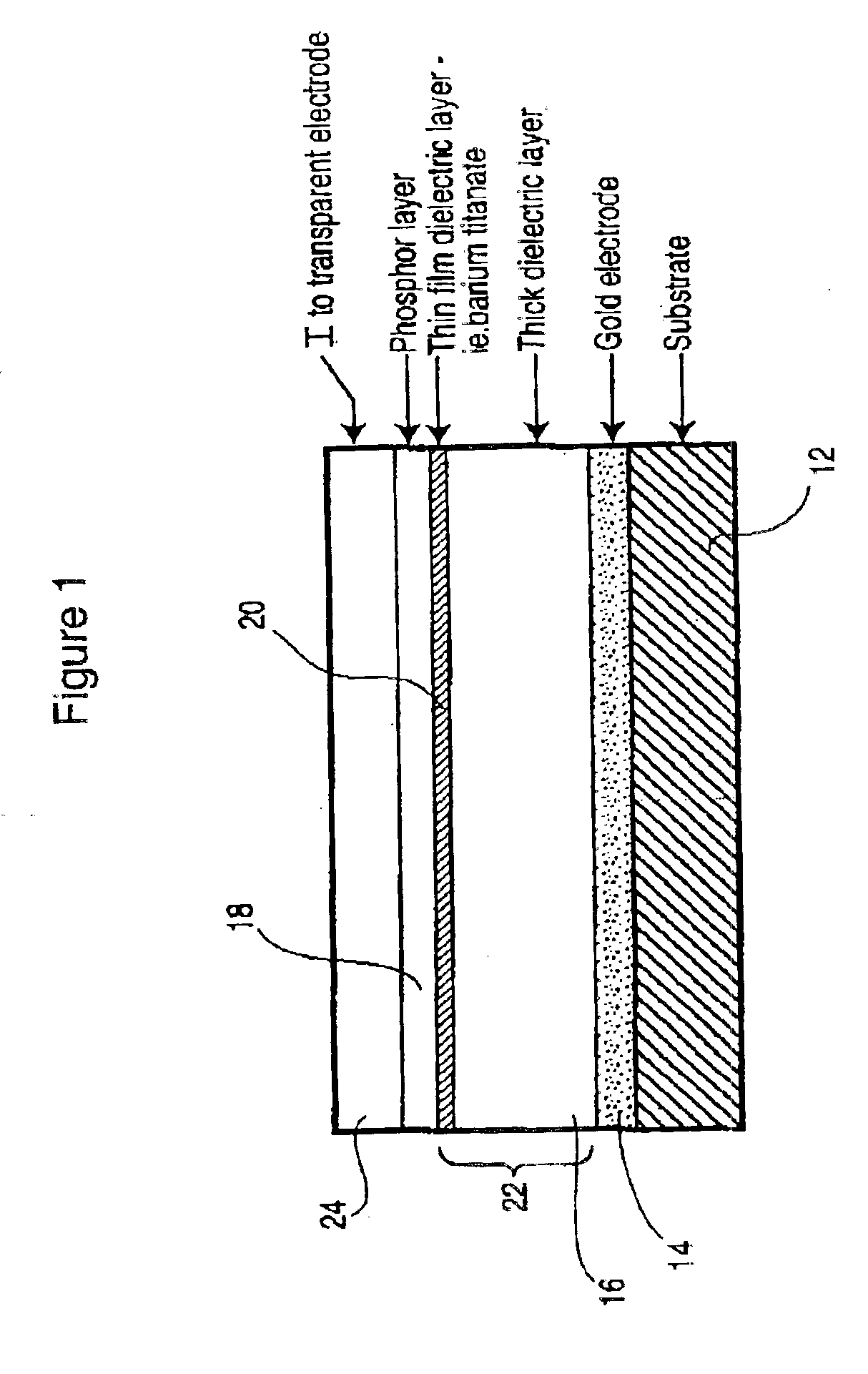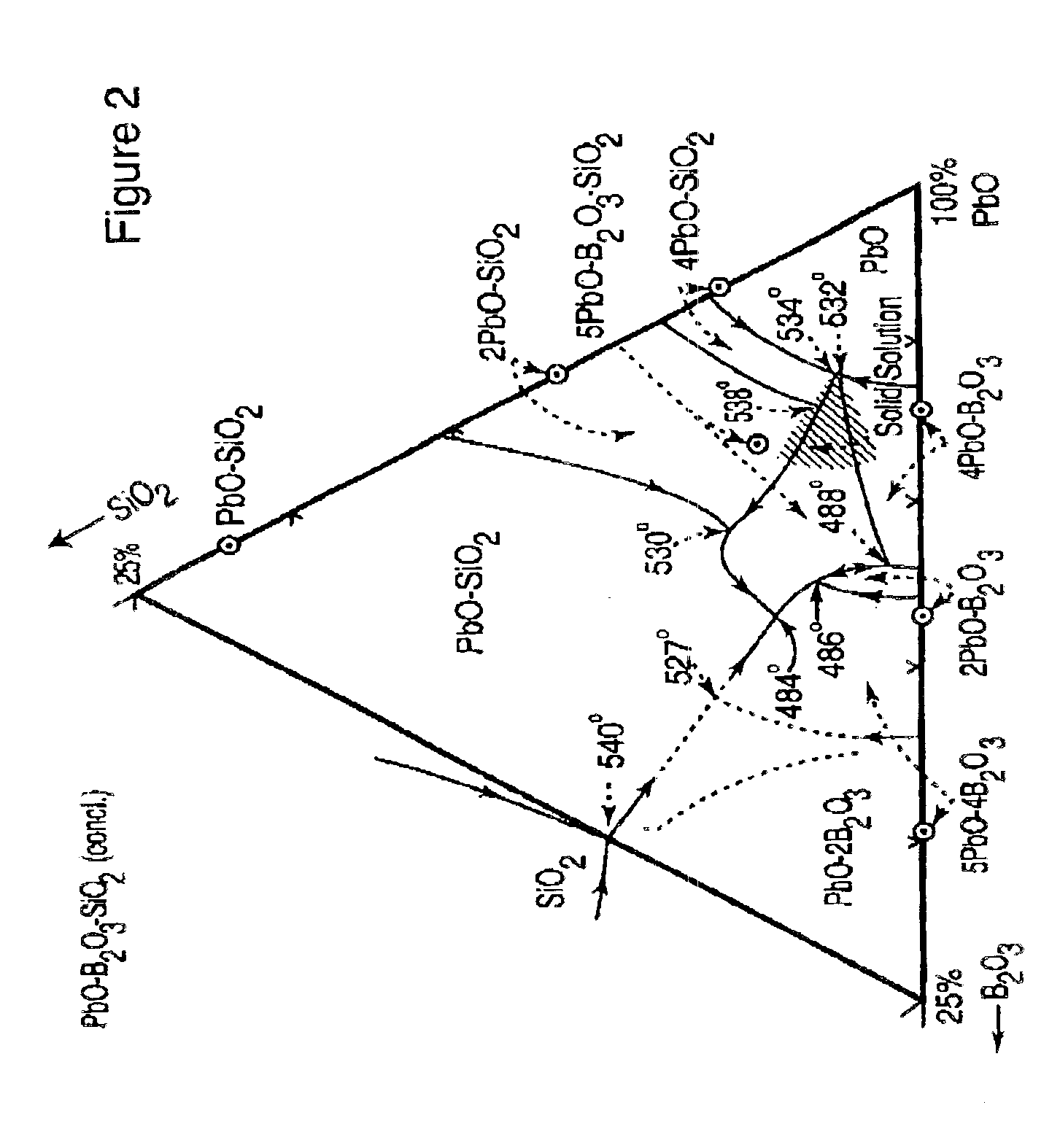Low firing temperature thick film dielectric layer for electroluminescent display
- Summary
- Abstract
- Description
- Claims
- Application Information
AI Technical Summary
Benefits of technology
Problems solved by technology
Method used
Image
Examples
example 1
[0116]With reference to FIG. 1, an electroluminescent device was constructed on a 5 centimeter by 0.5 centimeter by 5 centimeter thick PP8C glass substrate obtained from Nippon Electric Glass Co. Ltd. Of Osaka, Japan using the general methods described in U.S. patent application Ser. No. 09 / 540,288 in combination with the methods described herein. The device had a barium titanate barrier layer between the thick dielectric layer as described in Applicant's co-pending U.S. patent application Ser. No. 09 / 761,971 filed Jan. 17, 2001 (the contents of which are incorporated herein by reference) and a 0.5 micron thick zinc sulfide phosphor layer. The lower electrode was gold and the upper transparent electrode was indium tin oxide (ITO).
[0117]The thick film dielectric paste was formulated with perovskite-forming powdered precursor materials including 600 grams of PMN obtained from Ferro of (Niagara Falls, N.Y. USA), 18 grams of lead oxide, 20 grams of lead titanate and 20 grams of barium t...
example 2
[0121]An electroluminescent device was constructed as in Example 1, except that the ratio of alpha terpineol to the other ingredients in the milled slurry was increased by about 65% and the milling time following the addition of the perovskite-forming precursor materials was 6 hours rather than 2 hours. For this device the thick film layer after firing was 13 micrometers thick and the PZT layer was between 0.3 to 1.8 micrometers thick. Under the same testing conditions as for Example 1, the luminance was measured to be about 3000 cd / m2 and no dielectric breakdown occurred.
example 3
[0122]An electroluminescent device was constructed similar to that in Example 2, except that CF7567 frit rather than CF7583 frit from Ferro Electronic Materials was added to the paste formulation. The CF 7567 frit differs from the CF 7583 frit in that CF7583 has a softening temperature of 372° C. and a sealing temperature of 480° C., and CF7567 has a softening temperature of 358° C. and a sealing temperature of 420° C. The performance of the device was similar to that of Example 2.
PUM
| Property | Measurement | Unit |
|---|---|---|
| Grain size | aaaaa | aaaaa |
| Grain size | aaaaa | aaaaa |
| Grain size | aaaaa | aaaaa |
Abstract
Description
Claims
Application Information
 Login to View More
Login to View More - R&D
- Intellectual Property
- Life Sciences
- Materials
- Tech Scout
- Unparalleled Data Quality
- Higher Quality Content
- 60% Fewer Hallucinations
Browse by: Latest US Patents, China's latest patents, Technical Efficacy Thesaurus, Application Domain, Technology Topic, Popular Technical Reports.
© 2025 PatSnap. All rights reserved.Legal|Privacy policy|Modern Slavery Act Transparency Statement|Sitemap|About US| Contact US: help@patsnap.com



